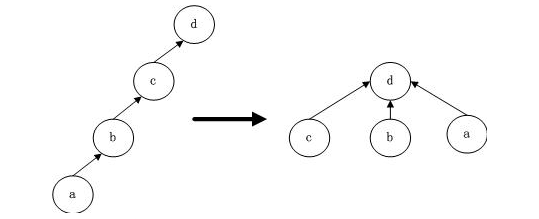起因
最近在做一个图片相关的项目,涉及到图片的处理,在切换到新的图片服务器之后,原始的图片裁剪接口失败,报错的原因是:
1 2 3 | |
很奇怪,错误原因是说new_2ffd34d0edf5dcc7807107dd9e745d2b.jpg这个图片不是jpg格式的图片.
问题
老的裁剪接口使用的是java自带的javax.imageio与java.awt.image包下工具,如ImageReader, ImageWritter,BufferedImage等. 错误发生的地方的代码逻辑:
1 2 3 4 5 6 7 8 9 | |
错误显示在最后上面代码的最后一行读取文件的时候失败,更下一步的原因是JPEGImageReader的read方法:
1 2 3 4 5 6 7 | |
ImageReader有很多的具体实现,包括PNGImageReader, BMPImageReader, GIFImageReader等,这里的原因就是一个png的图片后缀名改为jpg,然后Reader的时候会根据后缀(.jpg)来选择实际的Reader.
那么JPEGImageReader怎么知道这个图片不是一个jpg的图片呢?这就涉及到我们这里讲到的File magic number.
什么File magic number
Magic numbers are the first bits of a file which uniquely identify the type of file. This makes programming easier because complicated file structures need not be searched in order to identify the file type.
简单的说File magic number就是用文件的一些bit位来唯一标志这个文件的类型.
下面是三个图片文件(jpg, png, gif)的头部:
1 2 3 4 5 6 7 8 9 | |
图片1.jpg中的开始的ff d8表明只是一个JPG文件,随后的ff e0表明这是一种JFIF结构类型(参考:http://blog.csdn.net/kickxxx/article/details/8173332).
GIF文件的头部包括 : (47 49 46 38 39 61)和(47 49 46 38 37 61)这两种;
PNG文件头部 : 89 50 4E 47 0D 0A 1A 0A
典型文件的File magic number
总结一些典型文件的File magic number:
图片
| 文件类型 | 典型扩展名 | Hex字符 | Ascii digits |
|---|---|---|---|
| Bitmap format | .bmp | 42 4d | BM |
| FITS format | .fits | 53 49 4d 50 4c 45 | SIMPLE |
| GIF format | .gif | 47 49 46 38 | GIF8 |
| Graphics Kernel System | .gks | 47 4b 53 4d | GKSM |
| IRIS rgb format | .rgb | 01 da | .. |
| ITC (CMU WM) format | .itc | f1 00 40 bb | …. |
| JPEG File Interchange Format | .jpg | ff d8 ff e0 | …. |
| NIFF (Navy TIFF) | .nif | 49 49 4e 31 | IIN1 |
| PM format | .pm | 56 49 45 57 | VIEW |
| PNG format | .png | 89 50 4e 47 | .PNG |
| Postscript format | .[e]ps | 25 21 | %! |
| Sun Rasterfile | .ras | 59 a6 6a 95 | Y.j. |
| Targa format | .tga | xx xx xx | … |
| TIFF format (Motorola - big endian) | .tif | 4d 4d 00 2a | MM.* |
| TIFF format (Intel - little endian) | .tif | 49 49 2a 00 | II*. |
| X11 Bitmap format | .xbm | xx xx | |
| XCF Gimp file structure | .xcf | 67 69 6d 70 20 78 63 66 20 76 | gimp xcf |
| Xfig format | .fig | 23 46 49 47 | #FIG |
| XPM format | .xpm | 2f 2a 20 58 50 4d 20 2a 2f | / XPM / |
压缩文件
| 文件类型 | 典型扩展名 | Hex字符 | Ascii digits |
|---|---|---|---|
| Bzip | .bz | 42 5a | BZ |
| Compress | .Z | 1f 9d | .. |
| gzip format | .gz | 1f 8b | .. |
| pkzip format | .zip | 50 4b 03 04 | PK.. |
可执行文件
| 文件类型 | 典型扩展名 | Hex字符 | Ascii digits |
|---|---|---|---|
| MS-DOS, OS/2 or MS Windows | 4d 5a | MZ | |
| Unix elf | 7f 45 4c 46 | .ELF |

